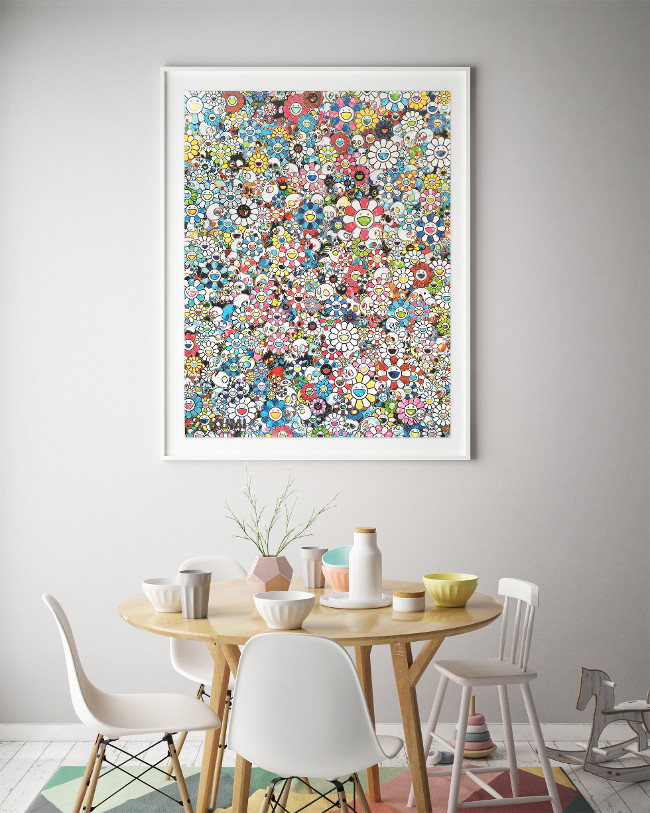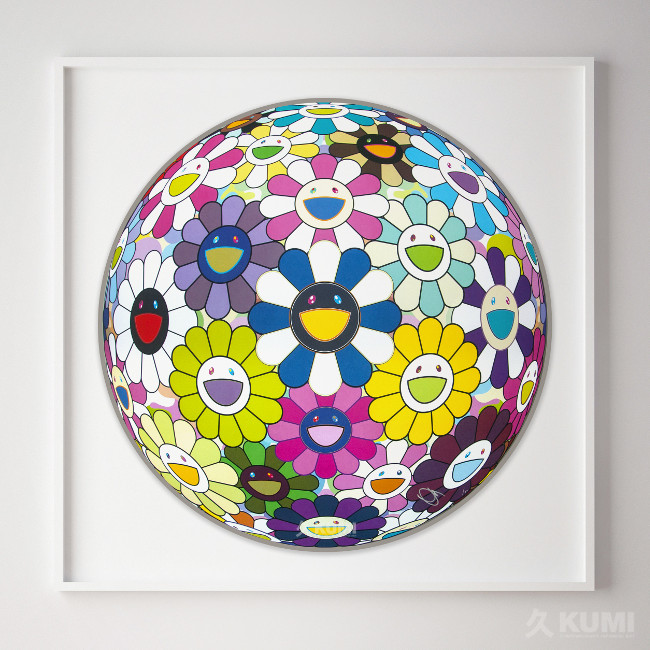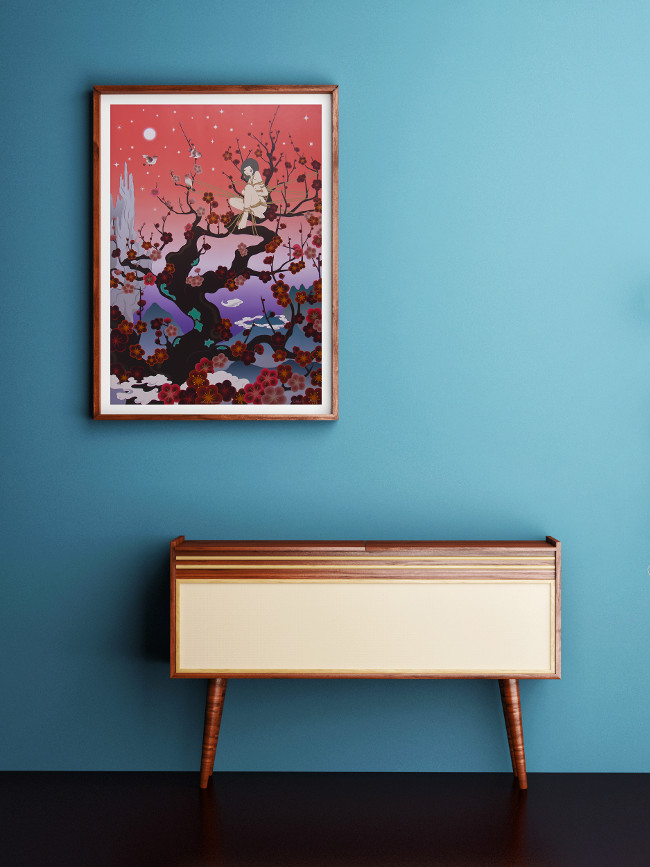With expert advice from Kumi Contemporary
Japanese contemporary art is bigger than ever, with artists like Yayoi Kusama and Takashi Murakami paving the way and reaching icon status. As the scene gains prominence, the works gain prominence in the home. If you’re a fan of modern works from the East, but not sure where to start when it comes to purchasing and displaying at home, here are five tips with the help of art experts, Kumi Contemporary to consider.

Get to know the artists
Visit exhibitions, research online, and get to know the Japanese contemporary artists before you decide whose works you want to buy. “Takashi Murakami, Yayoi Kusama and Yoshitomo Nara are the darlings of Japanese art and they continue to shine after years in the spotlight. British admirers have been enjoying notable exhibitions by these artists; Yayoi Kusama at Victoria Miro, Yoshitomo Nara at Stephen Freedman and recently Takashi Murakami at the Gagosian.” says Chris Belmont, founder of Kumi Contemporary. “I’m a huge collector of Takashi Murakami works; his prints have added warmth and playfulness into my own home, and the thousands of homes of our clients. I discovered his work years ago at university; he has an insatiable love for his craft and sharing it with the world – it’s a value I really admire. I’m still learning and make frequent trips to Tokyo to keep up with the Japanese art scene and the newest emerging talents. It’s why Kumi Contemporary is as successful as it is today.”
Think about colour scheme and interior design
What is your home’s colour scheme and will the piece fit or clash with the rest of your interiors? Buying a piece of art for your walls means it needs to fit with the overall interior décor. “Often the impact of a piece of work will depend on how it’s been integrated into your home. A clean minimalist interior can be given a pop of colour by selecting an artwork that is vibrant, drawing the eye into the space. A Takashi Murakami circular Flower Ball print for example creates an exquisite focal point. On the other hand, housing a piece in an interior that is classic in appearance should be considered with respect to both the colours and contents of a room. Often this involves looking for works which share similar colour schemes or themes.” adds Belmont.

Buy from a reputable dealer
You’ll obviously want pieces that are pristine and genuine and the only way to really ensure quality and authenticity is to buy from a reputable dealer. For originals, these include Sotheby’s if your budget allows you to take part in auction. In terms of limited edition signed prints, Kumi Contemporary are the leaders in the Japanese contemporary pack. “As originals works by some of the masters can demand over a million at auction, limited edition prints have grown in popularity. It allows collectors to opportunity to own a signed limited edition artwork from the likes of Takashi Murakami from £1,400. We’ve been specialising in contemporary Japanese art for close to a decade now and have become trusted internationally as a source for authentic prints. Buying from a reputable dealer is imperative; you really cannot beat the knowledge you will get from people who really understand the market and how best to store and transport fragile works of art.” explains Belmont.
Store your art correctly
It’s best to frame your artwork in the country it will have permanent residence and select the correct type of frame. “Artwork belongs on a wall; and it should be framed to conservation standards, which includes at least UV glass or UV Perspex. Museum glass is a good upgrade and reduces glare. Be careful not to put the work in a hot or humid location – bathrooms and conservatories for example are not the best places for artwork,” suggests Belmont.

Stick to a theme
It’s easy to get carried away and then end up with a mish-mash of a collection. Something with Belmont recommends carefully considering at the onset: “We always advise clients to buy artworks that they love; and often this can be a mix of different genres. We’ve seen some beautiful eclectic collections set in eclectic interiors which look fabulous. However, curating a collection must be done with a great deal of sensitivity – the impact of an artwork can be both enhanced and supressed depending on the environment in which it is placed. With careful consideration, an artwork will create not only a powerful visual statement in your home, but also an everlasting source of enjoyment and inspiration.”






















